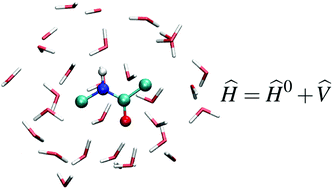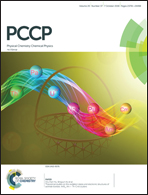Extending the perturbed matrix method beyond the dipolar approximation: comparison of different levels of theory
Abstract
Some years ago we developed a theoretical–computational hybrid quantum/classical methodology, the Perturbed Matrix Method (PMM), to be used in conjunction with molecular dynamics simulations for the investigation of chemical processes in complex systems, that proved to be a valuable tool for the simulation of relevant experimental observables, e.g., spectroscopic signals, reduction potentials, kinetic constants. In typical PMM calculations the quantum sub-part of the system, the quantum centre, is embedded into an external perturbing field providing a perturbation operator explicitly calculated up to the dipolar terms. In this paper we further develop the PMM approach, beyond the dipolar terms in the perturbation operator expansion, by including explicitly the quadrupolar terms and/or by expanding the perturbation operator on each atom of the quantum centre. These different levels of the perturbation operator expansion, providing different levels of theory, have been tested by calculating three different spectroscopic observables: the spectral signal of liquid water and aqueous benzene due to the lowest energy electronic excitation and the infrared amide I band of aqueous trans-N-methylacetamide. All the systems tested show that, even though the previous PMM level of theory is already capable of reproducing the main features of the spectral signal, the higher levels of theory improve the quantitative reproduction of the spectral details.



 Please wait while we load your content...
Please wait while we load your content...